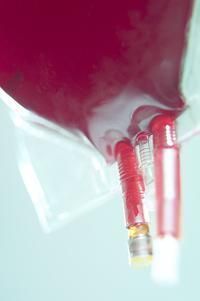Dutch doping book causes stir
Former team doctor published study of performance-enhancing methods

Peter Janssen, the former team doctor of Dutch squad Vacansoleil, has released a book called "Bloedvorm" [Blood Form], in which he discusses the dangers of various performance-enhancing substances and methods, including EPO.
Janssen caused some controversy by declaring that small doses of EPO were not harmful to the health of professional cyclists. "Well-dosed, EPO is an extremely safe medicine for patients and athletes alike. If my son would want to ride a Grand Tour, I would want to join him taking a little bit of EPO with me to make him come through it in good health. At the same time, I would advise him not to take it. It is bad to get caught for the rider and even worse for cycling. That's why it's better not to do it - not because you would suddenly die from it."
Janssen argued that the death of some Belgian and Dutch cyclists at the end of the 1980s, that had been linked to the appearance of EPO in professional cycling, actually occurred before the introduction of the blood booster in high endurance sports. "Italy was the first country were EPO was used in abundance and they had no deaths from sudden heart failure. Also, the bulk of these deaths occurred before the market introduction of rh-EPO, and it is not true that medicines first appear in the peloton before becoming available in the pharmacy."
The Dutch doctor goes on to explain that it was in the beginning of the 1990's that EPO got used by Italian riders, patients of Michele Ferrari. In 1995, the UCI introduced the 50 per cent hematocrit limit, but Janssen stated that the risks of being above that limit were exaggerated. "There is no ideal hematocrit value in medical literature. The stories of riders having 60 per cent are true, and these riders did not drop dead. I've had an older amateur with a hematocrit of 60 in my practice, he took EPO in combination with [steroid] Deca-Durabolin. I advised him to extract some of his blood, but he didn't want to: he was racing so well."
Instead, Janssen pointed the finger at other banned substances such as Oxyglobin and Hemopure, two oxygen-therapeutic products based on bovine hemoglobin, as well as medicines that were allowed in competition but that could have dangerous effects. "Iron should actually be on the list if banned substances. It helps when you have iron shortage, but in healthy persons it damages the liver. And the amount that some riders are using is life-threatening."
Janssen's book, which discusses further performance-enhancing methods such as altitude training and hyperbaric tents, was first published in July 2009, and now re-edited. The 67-year-old, who affirmed that he was against the use of banned substances, separated from the Vacansoleil team during the 2009 Vuelta.
Asked if he thought the peloton was cleaner now than ten years ago, he said: "There was a time in cycling that you could say what you wanted as a doctor, [the riders] still continued using [performance-enhancing substances]. That was until 2001 or 2002. After that, it became less and less. The riders know who's doing it. They tell me that cycling has never been as clean as now, but according to them there are still about 20 riders in the bunch that are especially 'prepared'."
Get The Leadout Newsletter
The latest race content, interviews, features, reviews and expert buying guides, direct to your inbox!
Most Popular

